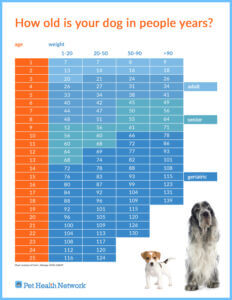
MORE ON DOG KIDNEY DISEASE
WHAT YOU NEED TO KNOW
We now know that kidney disease is more common as a dog ages, but did you know that 1 in 10 dogs will develop kidney disease in its lifetime. The more we know and understand about the disease the better chance you dog has at surviving it. There are two kidneys and when healthy they will:
- Filter the blood
- Process protein wastes and excrete them into the urine
- Conserve and balance body water, salts and acids
- Help to maintain normal red blood cells
Kidney disease occurs when one or more of these functions are compromised or reduced. Often it goes undetected until the organs are functioning at only 33% to 25% of their capacity. Since kidney transplants and dialysis are beyond the reach of most of us, it means you should be prepared to look for problems early.
More research is needed on canine kidney disease and one group that is doing just that is The international Renal Interest Society or IRIS (http://www.iris-kidney.com/
They list several risk factors that make dogs and cats more susceptible to kidney disease, such as age or breed, and investigate reversible factors that initiate or accelerate kidney damage. Some of the factors are:
- Glomerulonephritis
- Pyelonephritis
- Nephrolithiasis
- Ureteral obstruction & hydronephrosis
- Tubulointerstitial disease
- Leptospirosis
- Anyloidosis
DOGS URINATING
When a dog uncharacteristically urinates in places that their not supposed to, that could be one of the earliest signs of kidney disease. Excessive drinking is also a sign of problems, leading to urinating a nighttime or having accidents. Don’t take water away from your dog because that could make chronic kidney disease even worse. Always see your vet. when you have any concerns, by having your dog examined promptly when you see a change in water intake and urine production is key! Often overlooked are a pale appearance and oral ulcers, these are signs of kidney disease. Dogs tend to be sensitive to changes in their blood levels of waste, so even mild to moderate changes may cause signs of illness.
TESTING YOUR DOG FOR CHRONIC KIDNEY DISEASE
YOUR VETERINARIAN MAY SUGGEST THESE BASIS TESTS
The first test your vet is likely to perform is a physical examination, by keeping a routine schedule of physical examinations could help prolong the life of your dog. Even normal exams may be useful later as a baseline of comparison. During the exam, your vet might detect:
- Enlarged, painful kidneys
- Back or flank pain
- Changes in the prostate or urinary bladder
Rectal examinations can give more detail about the possibility of urethral, bladder or prostate disease that might relate to kidney disease. Find a large bladder in a dehydrated pet, or other, less specific, findings may also warn your vet about a kidney problem, such as:
- Low body temperature
- Excessive skin tenting
- Dry gums ( showing dehydration )
- Unkempt hair coat
MORE TESTS MAY INCLUDE
- Complete blood count
- Chemistry profile with electrolytes
- Urinalysis with sediment exam
- Urine culture with susceptibility
- Urine protein to creatinine ratio
- Infectious disease testing
- Diagnostic imaging
- Blood pressure measurement
- Kidney sampling
TAKING CONTROL OF CHRONIC KIDNEY DISEASE
Sick dogs with signs of kidney disease that include dehydration will likely require more intensive care in a pet hospital setting, while those that are content and are self-supporting can often be treated at home. Your veterinarian will work diligently to find a treatable cause of kidney disease and make individual recommendations for your dog.
GENERAL TREATMENT GOALS FOR DOGS WITH KIDNEY DISEASE INCLUDE:
- Providing adequate and appropriate nutrition with a kidney friendly diet ( always check with your vet before making any dietary changes ).
- Ensure excellent hydration
- Balancing salts and acid-base levels
- Aggressively treating any protein problems or high blood pressure, since these conditions tend to worsen kidney damage
- Keeping plenty of fresh water available-this is a must
Remember that dogs with kidney disease will usually need more trips outside to go to the bathroom, so by adding this to your household schedule will be very important. You can even use a good neighbor to help out, or a professional dog walker can come give your dog a midday bathroom break.
Your pet’s condition, any other illnesses discovered and your personal goals for treatment will help determine the course of treatment and dictate how often you will visit your veterinarian.
CHRONIC KIDNEY DISEASE PROGNOSIS AND ADVANCES
There are dogs with chronic kidney disease that will live for years after the diagnosis with a good quality of life. Others like mine won’t be so lucky.
As a caring pet guardian you can take an active role in your pet’s preventive care by planning for wellness exams and routine lab testing ( this is extremely important ). Work with your vet to address any problems before they get worse. The discovery of new biomarkers for kidney function, such as SDMA, provides for early recognition of kidney disease before values change and offers the prospect of earlier intervention and kidney care.
